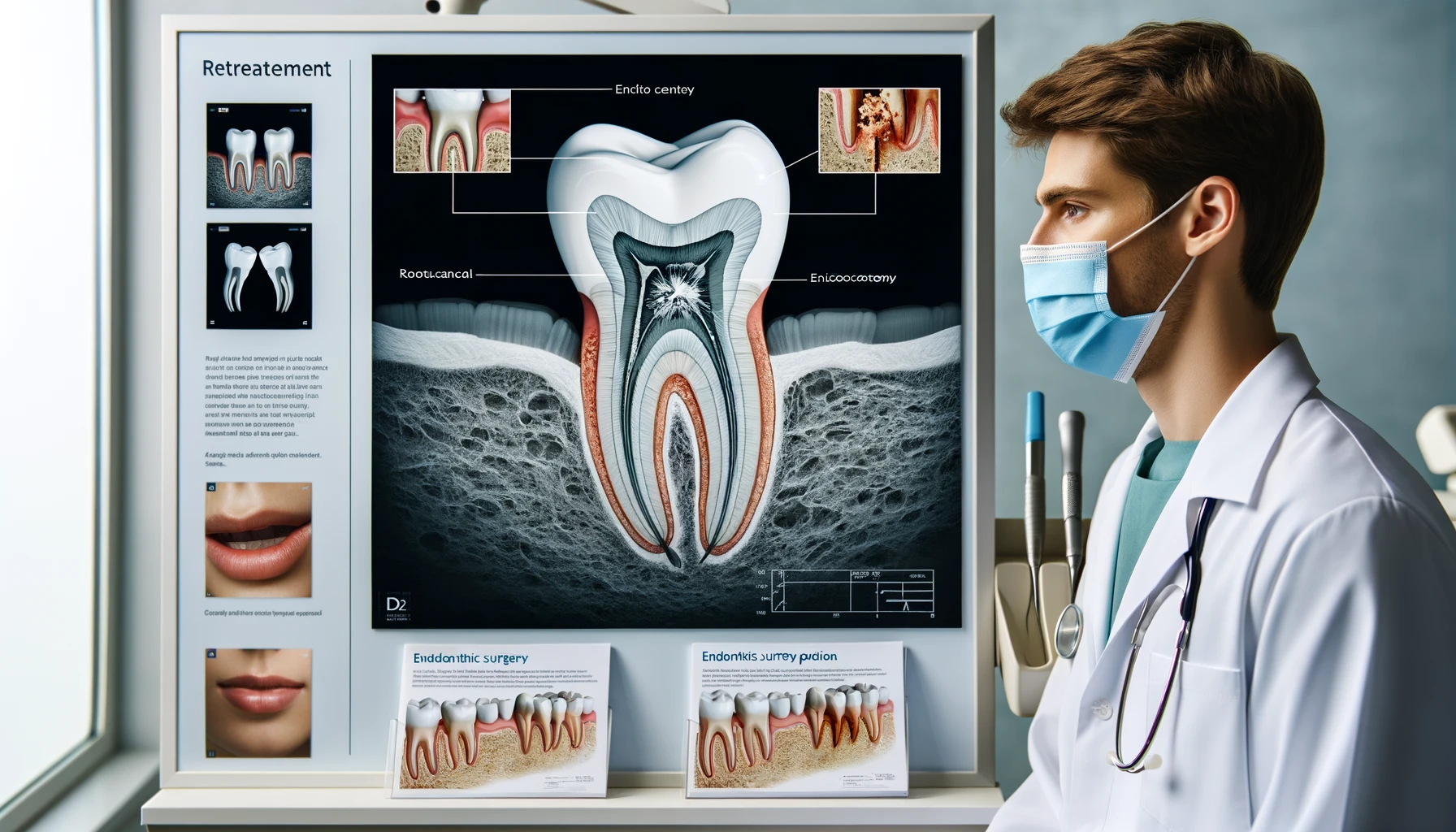Root canal treatment is a widely performed dental procedure aimed at saving a tooth that has suffered significant damage or infection. While the success rate for root canals is impressively high, failures can occur. Knowing the causes, symptoms, and available treatment options for a failed root canal can empower you to take prompt and effective action.
What is a Root Canal?
A root canal, or endodontic therapy, is a dental procedure designed to treat infections or damage within the pulp of a tooth. The pulp houses nerves, blood vessels, and connective tissue. When this area becomes infected or damaged, it can lead to excruciating pain and further complications if left untreated.
Purpose and Procedure of Root Canal Treatment
The primary goal of a root canal is to eliminate the infected or damaged pulp, thoroughly clean and disinfect the tooth’s interior, and then fill and seal it to prevent further infection. Here’s how the procedure typically unfolds:
- Anesthesia: Local anesthesia is administered to numb the affected area, ensuring comfort during the procedure.
- Access Opening: A small opening is created in the crown of the tooth to access the pulp chamber.
- Pulp Removal: Specialized instruments are used to remove the infected or damaged pulp.
- Cleaning and Shaping: The root canals are meticulously cleaned, shaped, and disinfected.
- Filling and Sealing: The cleaned canals are filled with a biocompatible material (usually gutta-percha) and sealed to prevent reinfection.
- Restoration: Finally, a crown or filling is placed on the tooth to restore its function and appearance.
Causes of Root Canal Failure
Understanding why a root canal might fail can help in preventing future issues. Common causes include:
- Incomplete Removal of Infected Tissue: If any infected pulp remains after treatment, it can lead to persistent pain and infection.
- Complex Canal Anatomy: Teeth often have intricate canal systems with multiple or curved canals that are difficult to clean thoroughly. Missed canals can result in treatment failure.
- Cracks or Fractures in the Tooth: Undetected cracks can allow bacteria to re-enter the tooth, leading to reinfection.
- Poor Restoration: A poorly fitted crown or filling can compromise the seal of the root canal, allowing bacteria to infiltrate again.
- Coronal Seal Breakdown: The coronal seal prevents bacteria from entering the treated tooth; its breakdown due to inadequate restoration can lead to reinfection.
- New Decay or Trauma: Fresh decay or trauma can expose the treated tooth to bacteria, increasing the risk of failure.
Signs and Symptoms of a Failed Root Canal
Recognizing the signs of a failed root canal is crucial for timely intervention. Look out for:
- Persistent Pain: Ongoing pain in the treated tooth may indicate failure. This discomfort could be constant or triggered by biting down.
- Swelling and Tenderness: Swelling in the gums around the treated tooth often signals an ongoing infection.
- Tooth Sensitivity: Lingering sensitivity to hot or cold temperatures may suggest unresolved issues within the tooth.
- Abscess Formation: The presence of a dental abscess—a pus-filled pocket in surrounding gums—indicates infection and requires immediate attention.
- Tooth Discoloration: A grayish tint in the treated tooth may signal improper healing.
- Discharge from the Tooth: Any discharge of fluids from the treated tooth is a clear sign of infection that needs prompt evaluation.
Diagnostic Methods
To diagnose root canal failure effectively, dentists utilize:
- Clinical Examination: A thorough examination can reveal signs like swelling, tenderness, and discharge.
- Radiographic Evidence: X-rays play a crucial role in diagnosing root canal failure by revealing persistent infections or abscesses that aren’t visible during clinical exams.
Treatment Options for a Failed Root Canal
If you suspect your root canal has failed, several treatment options are available:
- Root Canal Retreatment: This involves removing existing fillings, cleaning and disinfecting the canals again, then refilling and sealing the tooth. It’s often the first line of action for failed root canals.
- Apicoectomy: This surgical procedure entails removing the tip of the tooth’s root along with any infected tissue. The end of the root is then sealed off to prevent further infection.
- Tooth Extraction: If saving the tooth isn’t feasible, extraction may be necessary. The lost tooth can be replaced with a dental implant, bridge, or denture to restore function and aesthetics.
Preventing Root Canal Failure
Taking proactive steps can significantly reduce your risk of experiencing a failed root canal:
- Proper Oral Hygiene: Regular brushing and flossing help eliminate plaque and bacteria that could compromise your dental health.
- Regular Dental Check-ups: Routine visits allow your dentist to monitor your oral health closely and catch potential issues early on.
- Immediate Restoration: Ensure that any treated tooth receives prompt restoration with a crown or filling to protect it from bacteria.
- Avoiding Hard Foods: Steer clear of hard foods like ice or hard candies that might crack or damage your treated tooth.
Conclusion
Root canal treatment is an effective solution for preserving damaged or infected teeth. However, failures can occur due to various factors such as incomplete removal of infected tissue or poor restorations. By recognizing signs of failure early and seeking prompt treatment, you can prevent further complications. Maintaining good oral hygiene practices, attending regular dental check-ups, and protecting your treated teeth are essential steps toward ensuring their long-term health.
If you suspect any issues with your dental health following a root canal procedure, don’t hesitate—consult your dentist promptly for an evaluation!
What Are the Most Common Signs of a Failed Root Canal?
Common signs include persistent pain or discomfort in the treated tooth, swelling or tenderness in the gums around the tooth, the appearance of a pimple-like bump on the gums (dental abscess), tooth discoloration, and increased sensitivity to hot or cold temperatures.
Can a Tooth Be Saved After a Root Canal Failure?
Yes, in many cases, a tooth can be saved even after a root canal failure. Treatment options like retreatment, apicoectomy, or, in some cases, tooth extraction followed by dental implants or bridges can be effective in addressing the issue.
How Long After a Root Canal Can It Fail?
Root canal failure can occur shortly after the procedure or several years later. Early failures are often due to procedural complications, while later failures might result from new decay, fractures, or gum disease affecting the tooth.
What Causes a Root Canal to Fail?
Complex root canal anatomy, undetected canal branches, procedural errors, tooth cracks, and recontamination of the tooth as a result of decay or gum disease are just a few causes of root canal failures.
Is Retreatment for a Failed Root Canal Painful?
Retreatment procedures are generally performed under local anesthesia, making them as painless as possible. Most patients report discomfort similar to or less than that of the initial root canal procedure. Your dentist or endodontist will take all necessary steps to ensure your comfort during the treatment.







